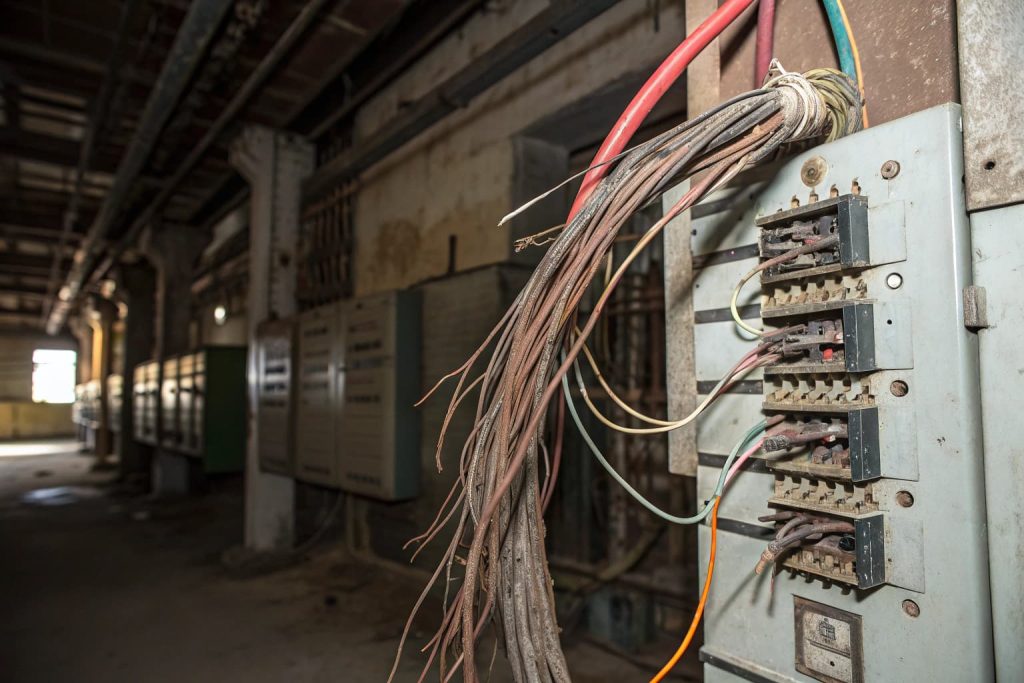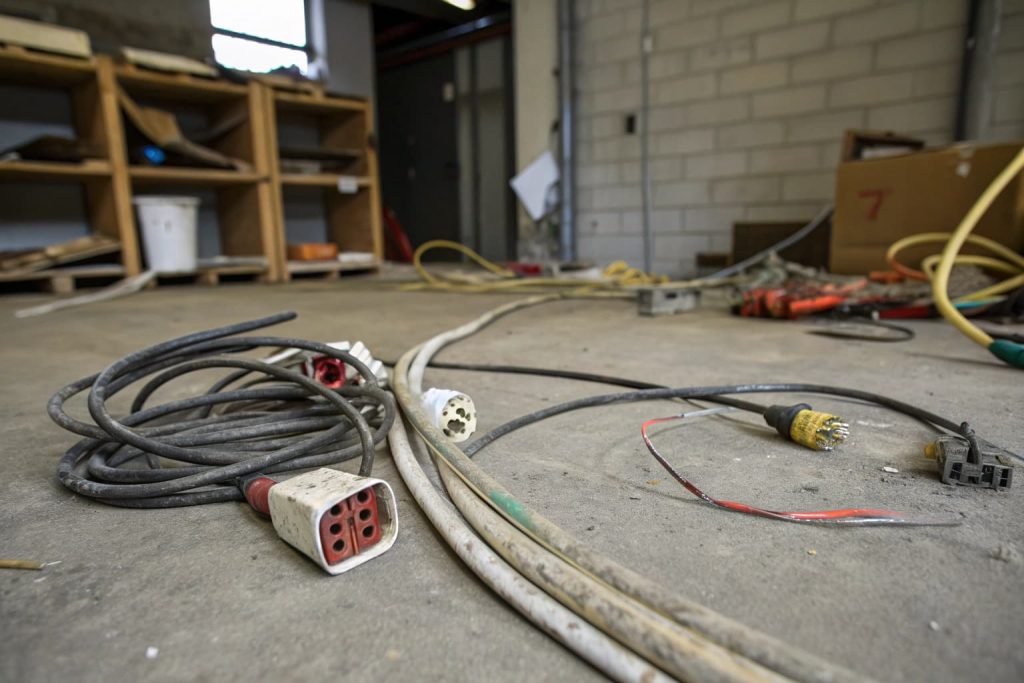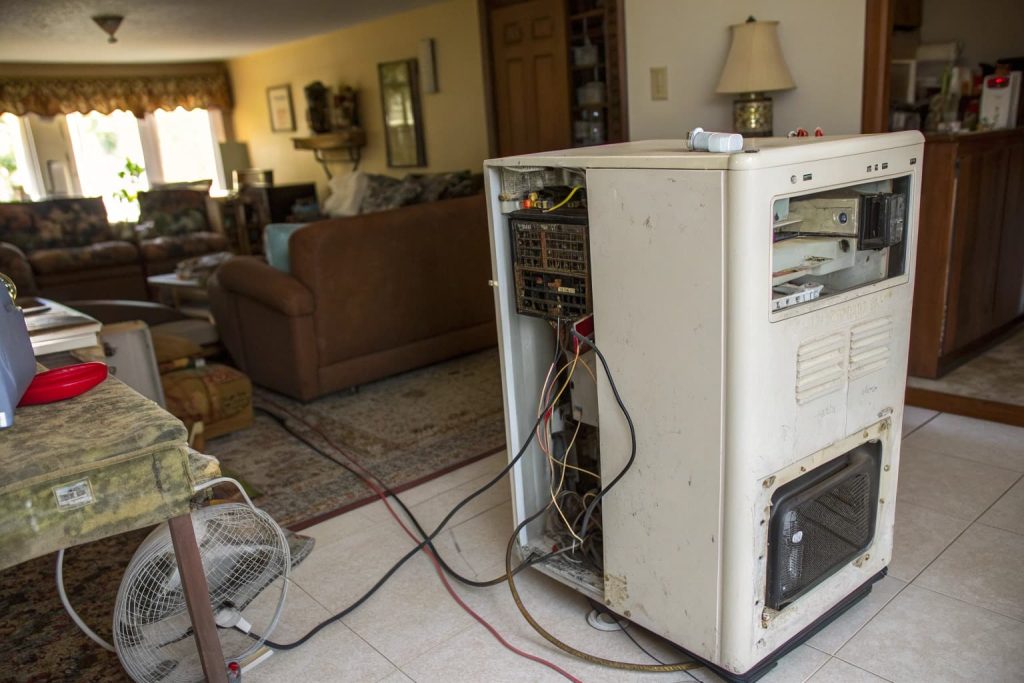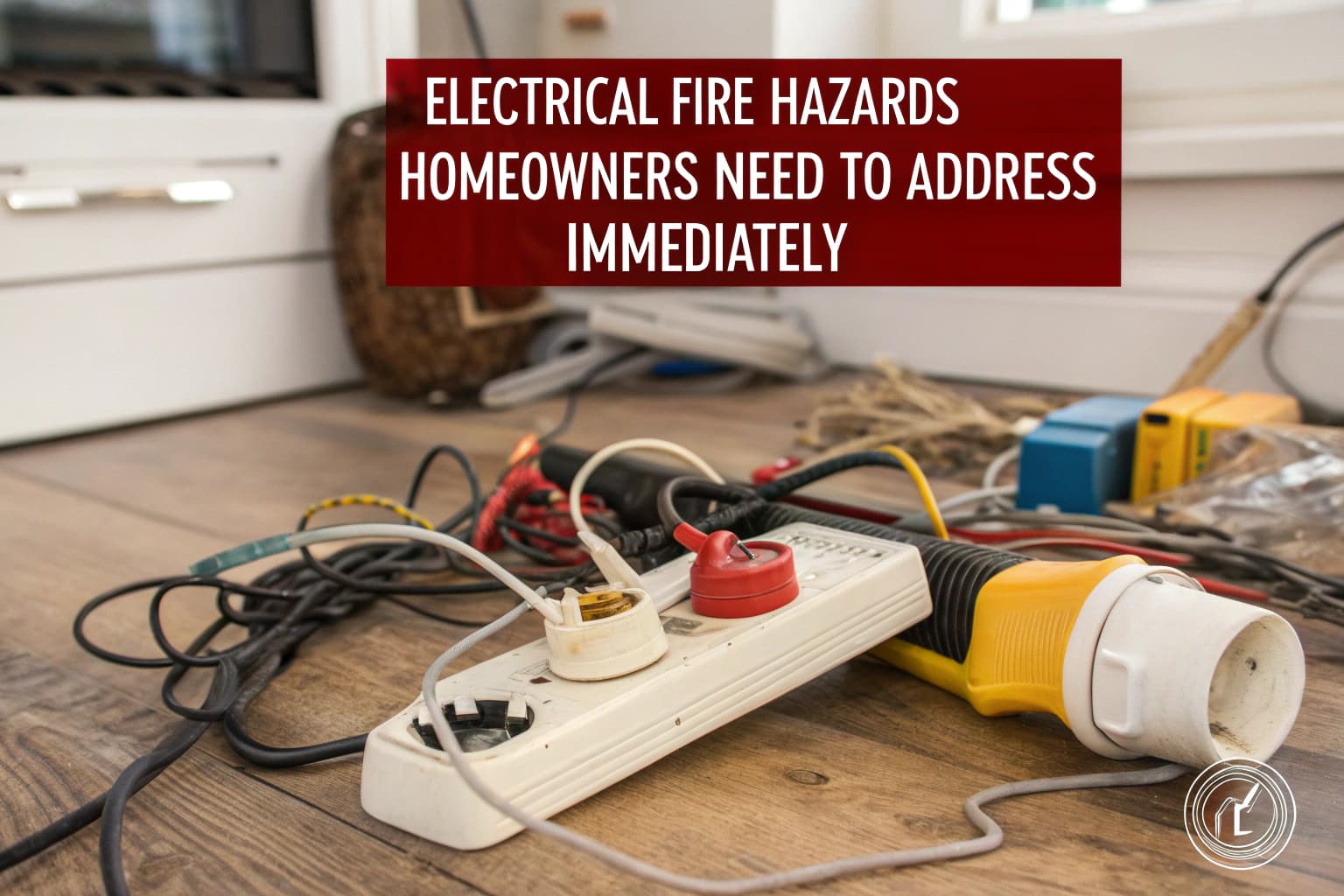The statistics surrounding electrical fires paint a concerning picture for homeowners across the UK and beyond. Electrical fires account for approximately 295 deaths and 900 injuries annually in residential settings, with property losses reaching a staggering £1.2 billion each year. But here’s what’s truly alarming-most of these electrical fire hazards home owners face are completely preventable. You’ve invested your heart, soul, and savings into creating a safe haven for your family, yet hidden dangers might be lurking behind your walls, inside your outlets, and within the very appliances you rely on daily. Understanding what causes electrical fires helps you identify risks before they become dangerous. In this detailed guide, we’ll explore the five most common electrical fire hazards that could be threatening your home right now, along with practical prevention strategies that every homeowner should implement immediately.
Understanding How Electrical Fires Start in Your Home
Before diving into specific hazards, it’s crucial to understand how electrical fires develop. Unlike other types of fires, electrical fires often begin silently, smoldering behind walls or inside electrical components for hours or even days before becoming visible. This makes them particularly dangerous because by the time you notice smoke or flames, significant damage may have already occurred. Research into what causes electrical fires in homes reveals that most incidents stem from five primary risk factors. These hazards share common characteristics: they generate excessive heat, create electrical arcs, or allow electricity to flow where it shouldn’t. The European Union reports that electrical hazards contribute to 25-30% of all fires, causing over 1,200 deaths and €10 billion in property damage annually. January shows the highest incidence of electrical fires-accounting for 12% of the annual total-primarily due to increased heating appliance usage and greater reliance on lighting systems during winter months. This seasonal pattern highlights how our daily electrical consumption directly impacts fire risk.
Hazard №1: Overloaded Circuits and Power Strips
Picture this scenario: you’re working from your home office, with your computer, monitor, printer, desk lamp, phone charger, and space heater all plugged into a single power strip. Sounds familiar, right? This common setup represents one of the most dangerous electrical fire hazards home owners create without realizing it.
What Makes Circuit Overloading So Dangerous
When multiple high-power devices are connected to a single outlet or circuit, the electrical load can exceed the system’s capacity. Your home’s electrical circuits are designed to handle specific amperage limits-typically 15 or 20 amps for most household circuits. When you exceed these limits, the wiring begins to heat up, potentially reaching temperatures that can ignite surrounding materials. Modern homes often struggle with this issue because they weren’t designed for today’s electrical demands. A typical household now uses three times more electricity than homes built just 30 years ago, yet many still operate on outdated electrical systems.
Real-World Examples of Circuit Overloading
Consider Sarah, a freelance graphic designer from Manchester, who experienced this firsthand. She had her high-end computer setup, including dual monitors, a graphics tablet, external hard drives, and a laser printer, all connected through a series of power strips daisy-chained together. One evening, she noticed a burning smell and discovered that the power strip had begun melting where multiple high-draw devices were connected. Another common scenario involves kitchen circuits during holiday cooking. When homeowners simultaneously run the microwave, electric kettle, toaster, and coffee machine-all on the same circuit-they’re creating a perfect storm for electrical overload.
Prevention Strategies That Actually Work
The most effective electrical fire prevention strategy for circuit overloading involves understanding your home’s electrical capacity and managing your usage accordingly. Start by identifying which outlets share circuits-you can do this by turning off circuit breakers and noting which outlets lose power together. Never daisy-chain power strips or extension cords together. If you need more outlets, have a qualified electrician install additional circuits rather than relying on temporary solutions. For home offices or entertainment centers, consider having dedicated 20-amp circuits installed to handle higher electrical loads safely. Invest in power strips with built-in circuit breakers and surge protection. These devices will automatically shut off power when they detect overload conditions, preventing dangerous heating situations.
Hazard №2: Faulty or Outdated Wiring Systems

Hidden behind your walls lies a network of wires that could be silently deteriorating, creating one of the most serious electrical fire hazards home owners face. Faulty wiring causes more residential electrical fires than any other single factor, yet it’s often the least visible threat.
The Hidden Dangers of Aging Wiring
Homes built before 1970 often contain aluminum wiring, which expands and contracts more than copper wiring, leading to loose connections over time. These loose connections create resistance, generating heat that can ignite nearby materials. Even copper wiring can become dangerous as insulation deteriorates, exposing bare wires that can arc and spark. Knob-and-tube wiring, common in homes built before 1950, presents particular risks. This system lacks a ground wire and uses cloth or rubber insulation that becomes brittle with age. When homeowners add modern electrical loads to these antiquated systems, they’re essentially asking a horse-drawn cart to keep up with a Formula 1 race.
Warning Signs Your Wiring Needs Attention
Learning to identify signs of electrical fire hazards related to wiring can save your life and property. Flickering lights that aren’t caused by loose bulbs often indicate loose wire connections. If lights dim when you turn on appliances, your wiring may be struggling to handle the electrical load. Hot outlet covers or switch plates signal dangerous overheating within the electrical system. You should never ignore burning smells, especially those that seem to come from walls or electrical panels. Frequent circuit breaker trips or blown fuses indicate your electrical system is working overtime to protect you from dangerous conditions.
Professional Assessment and Modernization
Unlike other electrical fire hazards home owners can address themselves, faulty wiring requires professional intervention. A qualified electrician can perform thermal imaging inspections to identify hot spots before they become dangerous. These inspections reveal problems invisible to the naked eye, including loose connections and overloaded circuits. If your home is over 40 years old and hasn’t had electrical updates, consider a complete electrical system evaluation. Modern electrical codes require GFCI protection in bathrooms, kitchens, and outdoor areas-upgrades that significantly reduce fire and shock risks. The investment in electrical system modernization pays dividends in safety, insurance savings, and home value. Many insurance companies offer discounts for homes with updated electrical systems, recognizing the reduced risk these improvements provide.
Hazard №3: Damaged Extension Cords and Electrical Cables

That frayed extension cord you’ve been meaning to replace? It’s not just an eyesore-it’s a potential fire starter waiting for the right conditions. Damaged electrical cables represent one of the most preventable electrical fire hazards home owners encounter, yet they’re often ignored until it’s too late.
How Cable Damage Creates Fire Risks
When extension cord insulation becomes damaged, it exposes the internal wires to air, moisture, and physical contact. These exposed wires can create electrical arcs-essentially mini lightning bolts-that generate temperatures exceeding 3,000 degrees Fahrenheit. That’s hot enough to ignite virtually any household material instantly. Pinched cords under furniture or in doorways create similar risks. The pressure damages internal wires, creating resistance points that generate heat. Even small nicks in cord insulation can allow moisture to penetrate, creating short circuits that spark fires.
Common Scenarios Leading to Cable Damage
Pet damage represents a significant but often overlooked cause of electrical cord problems. Cats and dogs, particularly puppies, may chew on electrical cords, creating dangerous exposure points. Rodents also pose risks, as they often gnaw on wiring within walls and attics. Improper storage damages extension cords over time. Coiling cords too tightly, storing them in extreme temperatures, or allowing them to remain kinked creates stress points where insulation fails. Many homeowners unknowingly create these problems by wrapping extension cords around tools or storing them in hot attics.
Smart Prevention and Replacement Strategies
Implementing proper electrical fire prevention for cable management starts with regular inspection routines. Monthly visual checks of all extension cords, appliance cables, and visible wiring can catch problems before they become dangerous. Look for any signs of damage: cracks, exposed wires, burn marks, or unusual flexibility in normally rigid areas. Replace damaged cords immediately-never attempt repairs with electrical tape, as these fixes often fail under electrical load. When purchasing replacement cords, choose ones rated for your intended use. Outdoor extension cords have different insulation requirements than indoor versions, and using the wrong type creates unnecessary risks. Proper cord management prevents damage from occurring. Use cord protectors in high-traffic areas, avoid running cords under carpets or furniture, and never nail or staple electrical cables. For permanent installations, have an electrician install proper outlets rather than relying on extension cords as long-term solutions.
Hazard №4: Defective or Overloaded Electrical Outlets
Your electrical outlets work silently and reliably for years, making it easy to forget they’re complex electrical components that can fail catastrophically. Defective outlets represent a significant portion of what causes electrical fires, particularly in older homes where outlets haven’t been updated to meet modern safety standards.
Understanding Outlet-Related Fire Risks
Electrical outlets contain multiple connection points where wires attach to the outlet mechanism. Over time, these connections can loosen due to thermal expansion and contraction, creating resistance that generates heat. Loose outlets that move when you plug or unplug devices indicate worn internal connections that pose fire risks. Outlets without GFCI protection in moisture-prone areas create additional hazards. Bathrooms, kitchens, basements, and outdoor areas require special outlets that shut off power when they detect electrical imbalances. Standard outlets in these locations can allow dangerous electrical conditions to persist until they cause fires or electrocution.
Recognizing Dangerous Outlet Conditions
Several warning signs indicate outlet problems that require immediate attention. Hot outlet covers signal dangerous internal heating that could ignite surrounding materials. Scorch marks around outlets show that arcing or overheating has already occurred-a clear indication that replacement is urgently needed. Outlets that spark when you plug in devices aren’t normal, despite what many homeowners believe. While tiny sparks can occur occasionally, consistent or large sparks indicate serious problems. Similarly, outlets that don’t hold plugs securely have worn internal components that create poor electrical connections. The age of your outlets matters significantly. Outlets installed before 1970 lack modern safety features and may not handle today’s electrical loads safely. Two-prong outlets without ground connections can’t provide the safety protection that modern appliances require.
Upgrading for Modern Safety Standards
Professional electrical fire safety improvements often start with outlet upgrades. GFCI outlets in appropriate locations provide protection against electrical shock and many fire-causing conditions. Arc-fault circuit interrupters (AFCIs) detect dangerous electrical arcs and shut off power before fires can start. USB outlets reduce the need for plug adapters and charging blocks that can overload standard outlets. These modern outlets include built-in surge protection and smart charging features that prevent overheating conditions common with multiple charging devices. Consider whole-house surge protection to safeguard all your electrical outlets and appliances. Power surges from lightning strikes or utility issues can damage outlet internal components, creating fire risks that may not become apparent for months after the initial damage occurs.
Hazard №5: Old or Faulty Electrical Appliances

That vintage toaster you inherited from your grandmother might have sentimental value, but it could also be harboring one of the most dangerous electrical fire hazards home owners overlook. Aging appliances account for a significant portion of residential electrical fires, often because their internal components deteriorate in ways that aren’t immediately visible.
How Appliance Age Affects Fire Risk
Electrical appliances contain multiple components that degrade over time: heating elements, motors, wiring, and control circuits. As these components age, they can develop internal shorts, loose connections, or insulation failures that create fire conditions. Appliances manufactured before modern safety standards may lack protective features that prevent dangerous overheating. The average lifespan of major appliances ranges from 8-15 years, depending on usage and maintenance. However, many homeowners continue using appliances well beyond their safe operational life, often because they “still work.” This mindset ignores the reality that internal deterioration can create fire risks even when appliances appear to function normally.
High-Risk Appliances and Warning Signs
Space heaters represent one of the highest-risk categories for appliance-related fires. Portable electric heaters account for approximately 40% of home heating fires, often because they’re used improperly or have developed internal faults. Never leave space heaters unattended, and ensure they have automatic shut-off features if tipped over. Kitchen appliances pose particular risks due to their high power consumption and frequent use. Coffee makers, toasters, and microwave ovens generate significant heat during operation, and internal component failures can cause these appliances to overheat dangerously. Watch for unusual odors, strange noises, or inconsistent operation-all signs that internal problems may be developing. Clothes dryers deserve special attention because they combine high heat, electrical components, and lint accumulation. Lint buildup restricts airflow, causing heating elements to work harder and potentially overheat. Clean your dryer’s lint filter after every load, and have the exhaust vent professionally cleaned annually.
Maintenance and Replacement Strategies
Effective electrical fire prevention for appliances involves both proper maintenance and timely replacement. Keep appliances clean and well-ventilated, as dust accumulation can insulate components and cause overheating. Follow manufacturer maintenance schedules, particularly for appliances with filters or moving parts. Monitor your appliances for changes in performance that might indicate developing problems. Appliances that trip circuit breakers, produce unusual sounds, or operate inconsistently may have internal electrical problems that pose fire risks. Don’t ignore these warning signs-they often precede more serious failures. When replacing old appliances, choose models with modern safety features like automatic shut-offs, ground fault protection, and thermal overload protection. These features significantly reduce fire risks compared to older appliances that lack such protections.
When to Call a Professional Electrician
Knowing when electrical problems exceed DIY capabilities can mean the difference between a minor repair and a catastrophic fire. While homeowners can address some electrical fire safety measures themselves, many situations require professional expertise to ensure proper resolution and ongoing safety.
Emergency Situations Requiring Immediate Professional Response
Certain conditions demand immediate professional attention, regardless of time or cost. If you smell burning odors coming from electrical panels, outlets, or appliances, shut off power to the affected area and contact an electrician immediately. Visible sparks, smoke, or flames from electrical components constitute electrical emergencies that require professional response. Frequent circuit breaker trips or blown fuses indicate serious electrical problems that DIY solutions can’t address safely. While resetting a breaker occasionally is normal, repeated trips suggest overloaded circuits, short circuits, or ground faults that need professional diagnosis and repair. Water damage affecting electrical systems creates extremely dangerous conditions. Never attempt to restore power to water-damaged electrical components yourself. Professional electricians have specialized equipment to test electrical systems safely after water exposure and can identify hidden damage that might not be immediately apparent.
Routine Professional Services for Fire Prevention
Proactive electrical fire prevention includes regular professional inspections, particularly for homes over 20 years old. Professional electricians can perform thermal imaging inspections that reveal hot spots invisible to homeowners. These inspections identify loose connections, overloaded circuits, and deteriorating components before they become fire hazards. Electrical panel upgrades often require professional installation to meet current safety codes. Modern panels include arc-fault and ground-fault protection that significantly reduces fire risks compared to older electrical panels. Professional installation ensures these safety systems function properly and meet local electrical codes. Whole-house electrical evaluations provide detailed assessments of your home’s electrical safety. These evaluations identify code violations, safety hazards, and opportunities for improvement. Professional electricians can prioritize necessary repairs and upgrades based on safety risks and budget considerations.
Choosing the Right Electrical Professional
When selecting an electrician for electrical fire safety work, verify their licensing and insurance status. Licensed electricians have demonstrated competency in electrical safety codes and practices. Insurance protection safeguards you against potential damages during electrical work. Look for electricians with experience in residential electrical fire prevention and safety upgrades. Ask about their familiarity with thermal imaging inspections, modern safety devices, and current electrical codes. Experienced professionals can often identify potential problems that less experienced technicians might miss. Request detailed written estimates that specify the work to be performed, materials to be used, and safety standards to be met. Professional electricians should be able to explain why specific repairs or upgrades are necessary for fire prevention and how their recommendations address your home’s particular risks.
Essential Electrical Fire Safety Measures Every Homeowner Should Know
Beyond addressing specific hazards, implementing proper electrical fire safety measures creates multiple layers of protection for your home and family. These measures work together to prevent fires from starting and limit damage if electrical problems do occur.
Detection and Early Warning Systems
Smoke alarms represent your first line of defense against electrical fires, but proper placement and maintenance are crucial for effectiveness. Install smoke alarms on every floor of your home, including basements and attics where electrical equipment is located. Test alarms monthly and replace batteries annually, even in hardwired units that have battery backups. Consider installing heat detectors in areas where smoke alarms might produce false alarms, such as garages or utility rooms. Heat detectors respond to temperature increases rather than smoke, making them ideal for areas with electrical panels or appliances that might generate dust or moisture. Smart smoke detectors can alert you to problems even when you’re away from home, providing early warning that allows for faster emergency response. These devices can also differentiate between different types of fires, providing more specific information to emergency responders.
Emergency Response Preparation
Knowing what to do if an electrical fire starts can mean the difference between minor damage and total loss. Never use water on electrical fires, as water conducts electricity and can cause electrocution. Instead, use Class C fire extinguishers specifically designed for electrical fires, or baking soda for small electrical fires involving appliances. If an electrical fire occurs, your first priority should be cutting power to the affected area if you can do so safely. Electrical panel locations should be clearly marked and accessible to all family members. However, never attempt to reach electrical panels through smoke or flames-evacuate immediately and let firefighters handle power disconnection. Develop and practice family evacuation plans that account for electrical fire scenarios. Electrical fires can spread rapidly and produce toxic smoke, making quick evacuation essential. Ensure all family members know multiple exit routes and have a designated meeting place outside the home.
Proven Electrical Fire Prevention Strategies That Work
The best electrical fire prevention strategy involves both professional inspections and homeowner vigilance. Regular maintenance, proper usage habits, and timely upgrades create a comprehensive approach to electrical fire safety that protects your investment and your family.
Creating a Maintenance Schedule
Monthly electrical safety checks should become as routine as checking smoke alarm batteries. Walk through your home looking for signs of electrical problems: flickering lights, warm outlet covers, unusual odors, or damaged cords. Document any issues you discover and address them promptly. Seasonal maintenance tasks should include cleaning around electrical panels, checking outdoor electrical connections, and testing GFCI outlets using their built-in test buttons. Spring and fall are ideal times for these more detailed inspections, as they coincide with other home maintenance activities. Annual professional inspections provide expert evaluation of your home’s electrical safety. Professional electricians can identify developing problems that homeowners might miss and recommend preventive measures that address your home’s specific risks and usage patterns.
Investment in Modern Safety Technology
Modern electrical fire prevention techniques have evolved significantly in recent years, offering homeowners better protection than ever before. Arc-fault circuit interrupters detect dangerous electrical arcs and shut off power before fires can start. These devices are now required by electrical codes in most areas of new homes. Smart electrical panels provide real-time monitoring of your home’s electrical usage and can alert you to unusual conditions that might indicate developing problems. These systems can even shut off power to specific circuits when they detect dangerous conditions. Surge protection systems safeguard your electrical system from power surges that can damage components and create fire risks. Whole-house surge protectors work in conjunction with individual device protectors to provide comprehensive protection against electrical damage.
Conclusion: Taking Action to Protect Your Home
The electrical fire hazards home owners face are serious, but they’re also largely preventable with proper awareness, maintenance, and professional support. The statistics we’ve discussed-295 deaths, 900 injuries, and £1.2 billion in property losses annually-represent real families whose lives were changed by preventable electrical fires. You’ve now learned about the five most common electrical fire hazards lurking in homes: overloaded circuits, faulty wiring, damaged extension cords, defective outlets, and aging appliances. More importantly, you understand the practical steps you can take to address each of these risks before they threaten your family’s safety. Remember that electrical fire safety isn’t a one-time concern-it requires ongoing attention and maintenance. The small investments you make in electrical safety today can prevent catastrophic losses tomorrow. Whether it’s replacing a damaged extension cord, upgrading old outlets, or scheduling a professional electrical inspection, each action you take reduces your home’s fire risk. Don’t wait for warning signs to appear before taking action. Many electrical fire hazards develop silently, giving little warning before they become dangerous. The time to address electrical safety is now, while you can make changes proactively rather than reactively. If you’re unsure about any aspect of your home’s electrical safety, consult with a qualified electrician. Professional electrical fire safety assessments provide peace of mind and can identify risks that aren’t apparent to homeowners. The cost of professional evaluation is minimal compared to the potential losses from electrical fires. Your home should be a safe haven for your family, not a source of hidden dangers. By understanding these common electrical fire hazards and taking appropriate preventive action, you’re investing in your family’s safety and your property’s protection. The knowledge you’ve gained today empowers you to make informed decisions about your home’s electrical safety-use it wisely.

